For Distraction Series 19, we were inspired to re-examine the friendship between Arakawa, Madeline Gins, and Ray Johnson after seeing Ray Johnson: WHAT A DUMP at David Zwirner’s West 19th Street gallery in New York. Curated by Jarrett Earnest, this thoughtful exhibition brings together a variety of works and materials from the Ray Johnson Estate. If you are in New York and have not yet seen it, you have until May 22nd! In the meantime, we hope you enjoy this selection of items from our archive alongside pieces from the exhibition and the Ray Johnson Estate.
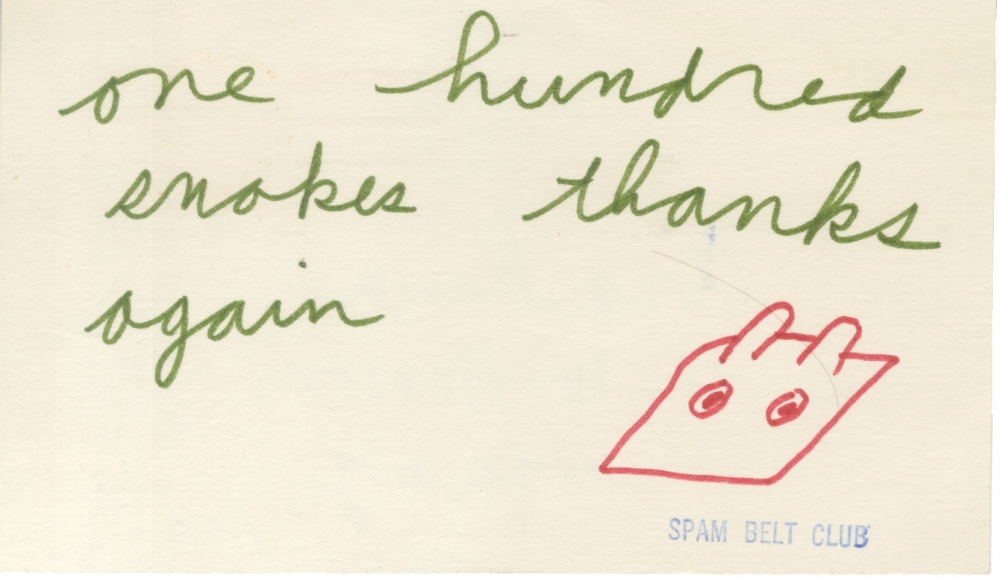
Aside from some personal notes, we find evidence of the trio’s friendship exactly where we would expect to – within Ray Johnson’s mail art, collages, and other ephemera. From bunnies, to comic strips and coloring book pages, to stamps with quotes about mail art, to a page of repeated hand-stamped descriptions of his collage process, both Madeline and Arakawa received a number of very interesting mailings from Johnson’s New York Correspondence School (sometimes with different spellings of correspondence). Madeline was also mailed a photocopy of an article published in a Finnish magazine that featured a letter from Johnson printed in mirrored typed text, making it almost as hard to read as the Finnish surrounding it would have been for Johnson.
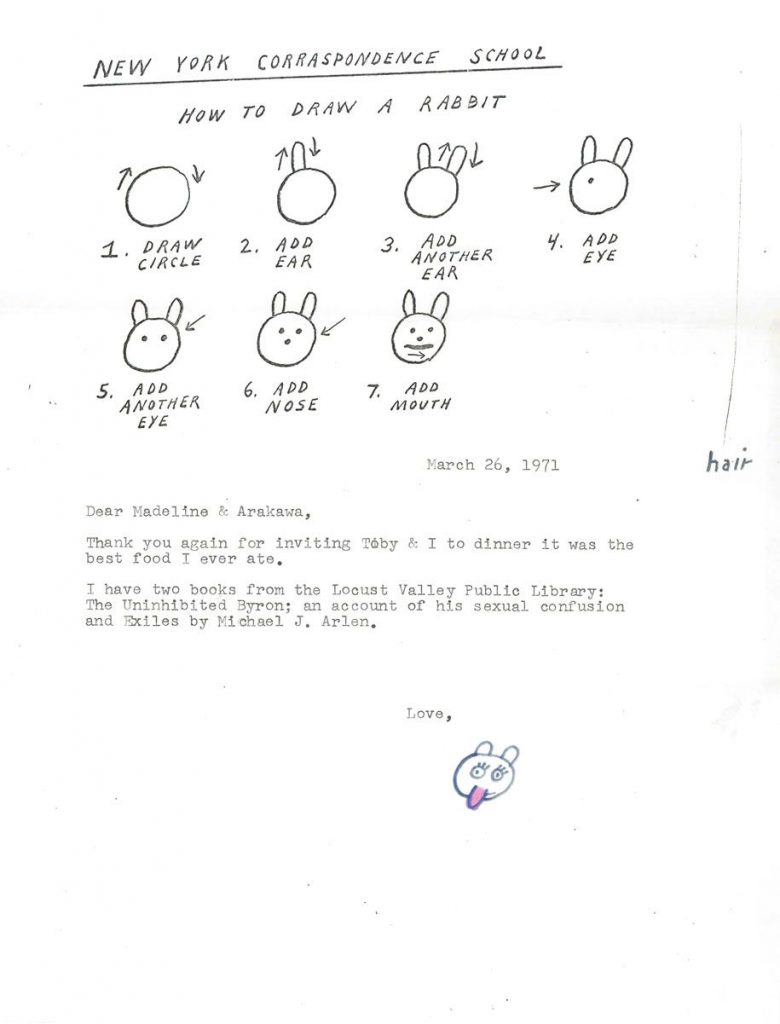
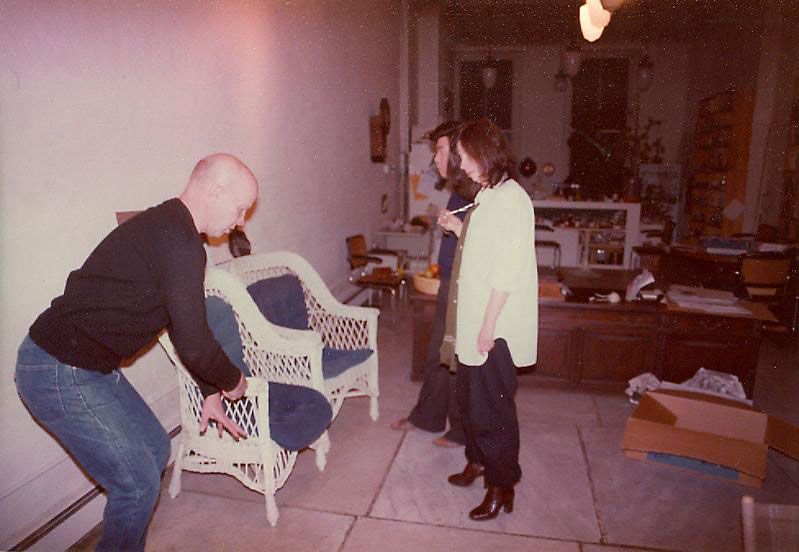
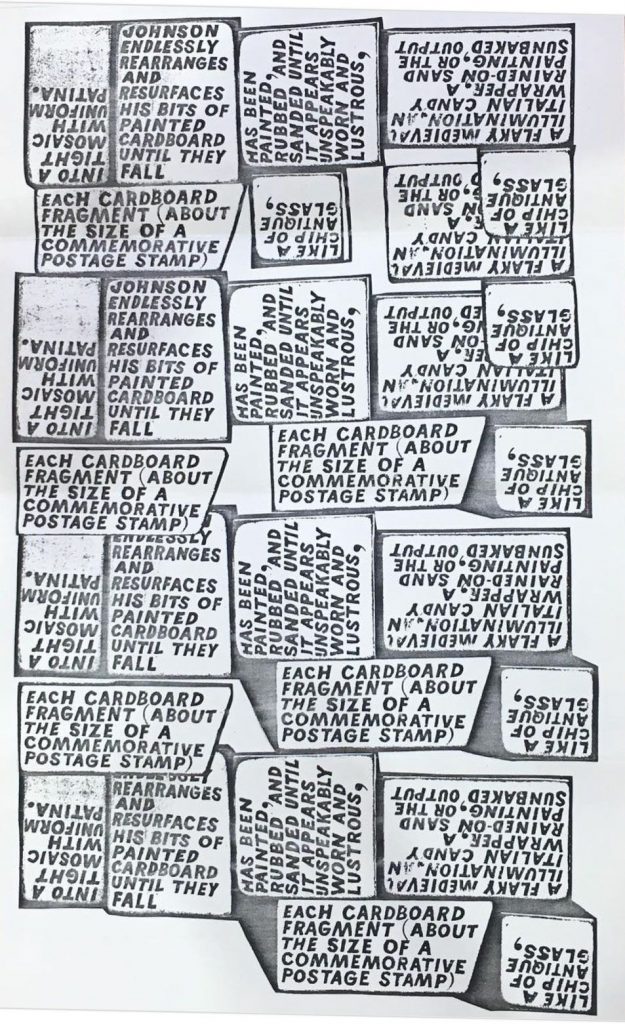
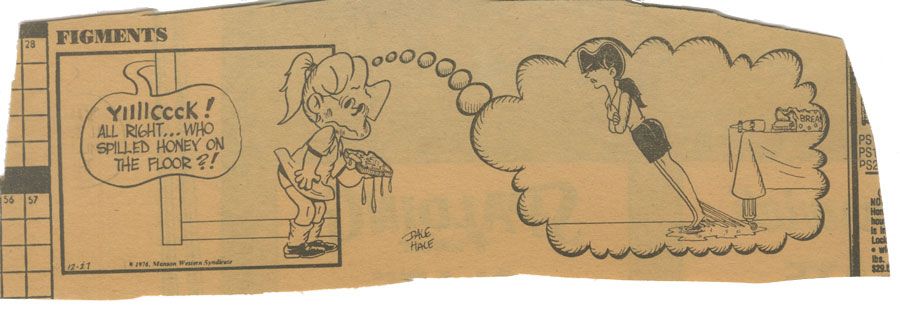
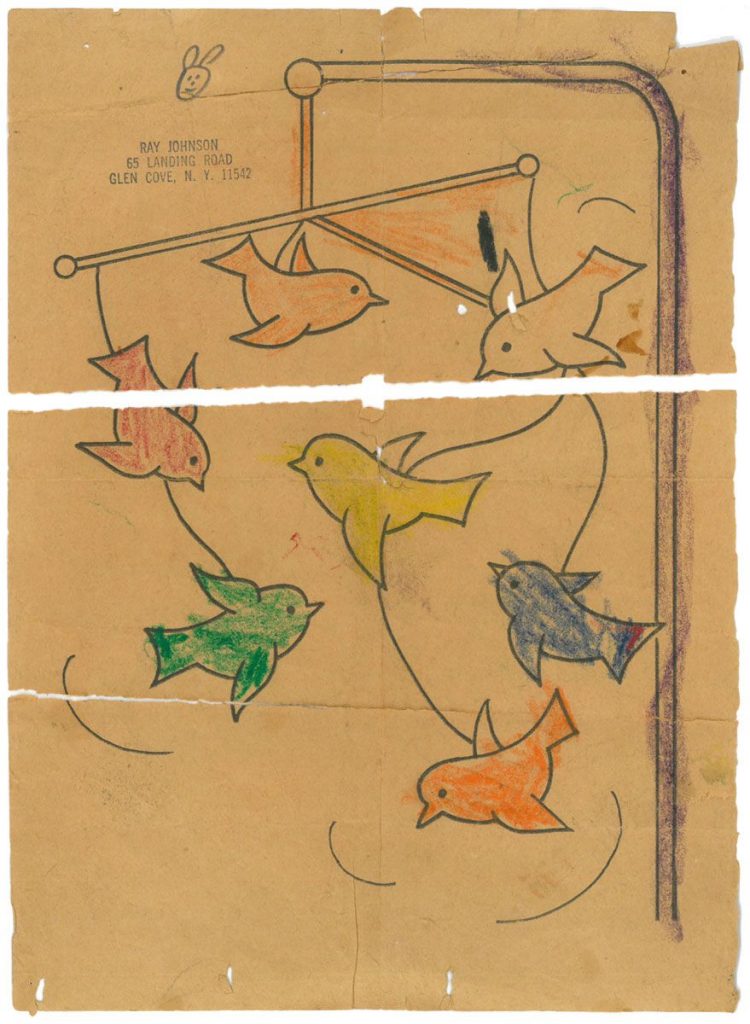
As part of his 1976 silhouette project, Ray Johnson traced profiles of both Madeline and Arakawa. Arakawa’s silhouette was one of the first Johnson made and it was included in many collages. Other collages are labelled “For Arakawa” or have “Arakawa” in the title. In some collages, we find visual elements of Arakawa’s paintings. In Untitled (For Arakawa), 1980, Johnson includes the direction, “Please send to…”, in part referring to the instructional aspect of Arakawa’s work. This instruction activates the viewer, making them an integral part of the piece. This activation of the viewer pairs perfectly with Duchamp and his suggestion in The Creative Act, 1957, that the viewer and the artist were equal. “Please send to…” is placed beneath a cutout of Duchamp’s profile from a map, another visual element often employed by Arakawa. Instructions connect Arakawa to Johnson himself as well, when, for example, he teaches us how to draw a bunny. It is fitting then that these collage pieces are pasted on top of an image of Johnson’s own face, mostly covered, and hand, which sports a number of snake rings, allowing for his easy identification. We see this recurring visual element pop up verbally as well, for example, in a postcard from Johnson to Arakawa reading, “one hundred / snakes thanks / again”.
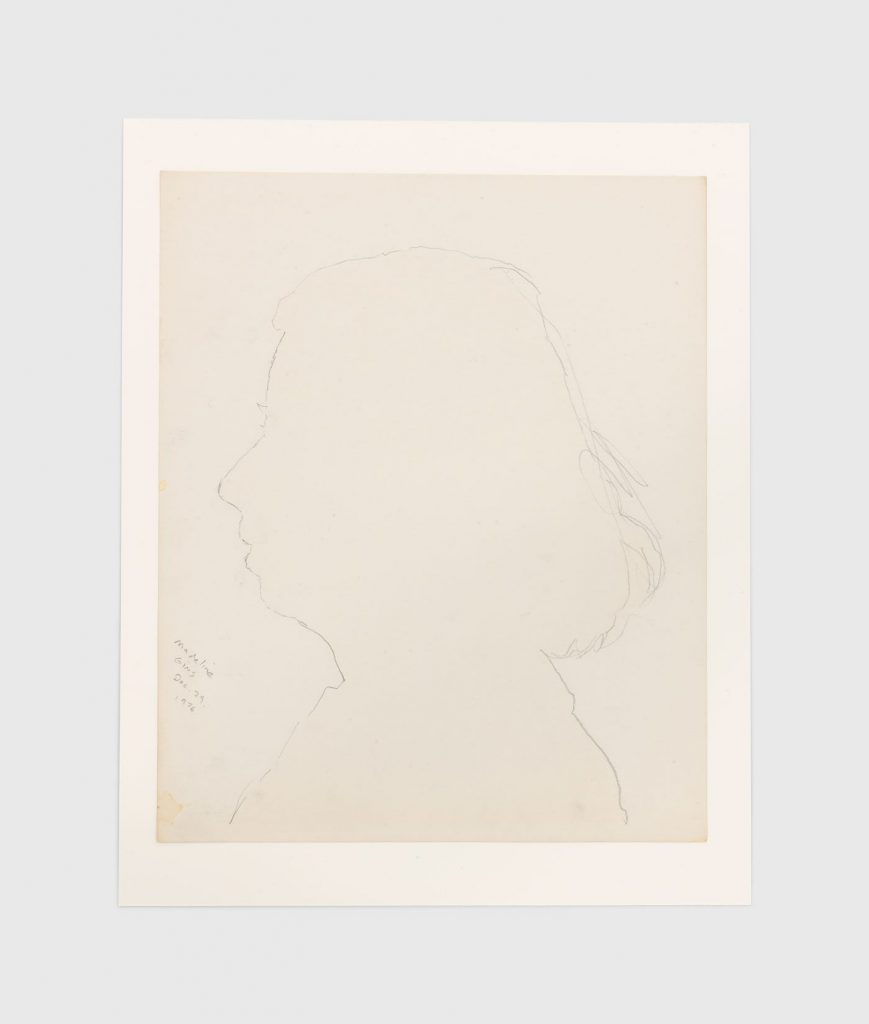
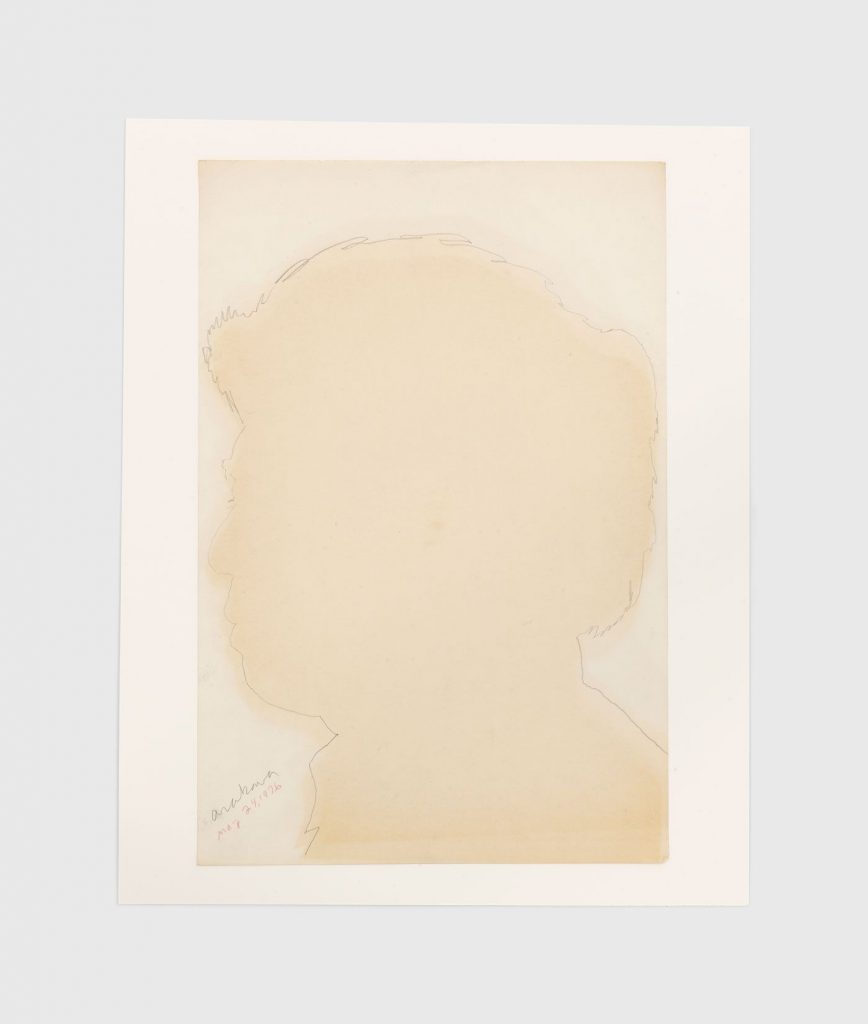
While many people associated with the art world were featured in the collages, Arakawa is second only to Warhol in his appearances in Johnson’s work and ephemera. In Untitled (Warhol with Arakawa and Brillo Box), n.d., Warhol and Arakawa’s silhouettes appear together, with Arakawa’s layered overtop of Warhol’s. Other elements expand upon what brings the two artists together. Warhol’s Brillo Box highlights the importance of the everyday object or ready-made for both these artists. On the other hand, the significance of some rather phallic shapes that in one case has been made into a fish or eel through the addition of a cartoonish eye is anyone’s guess. Another collage bears the title “Lake Arakawa,” which could be a play on the Arakawa River, so perhaps this fish-like creature refers back to what would have been a very creative lake. Loose associations and word play can be found as well in Untitled (BRUNCH), 1979, 1981-1986, 1992. This collage features an image of Shelley Duval drinking a Coca Cola and has a drawing of a seashell (Shell-ey). It also includes Arakawa’s silhouette and a few beginnings of letters, reading in one case, “Dear 8 1/2 inches …”, perhaps referring to Arakawa’s use of measurements within his works. “Dear Albert M. Fine” is written on the vertical axis, bringing another artist into the collage from whom Arakawa also received mail art. Why pair Shelley Duvall and Arakawa? We may never know, but their birthdays happen to be one day apart in July. Or perhaps Arakawa was a member of the Shelley Duval Fan Club, of which Ray Johnson was the creator and president.
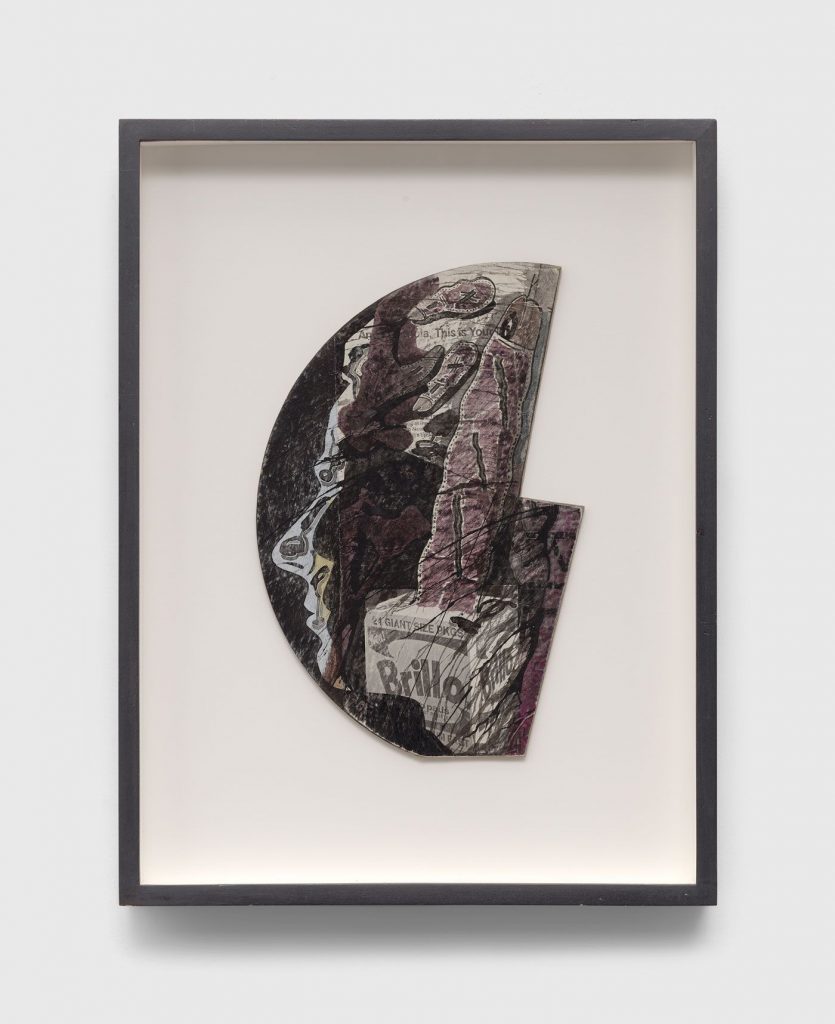
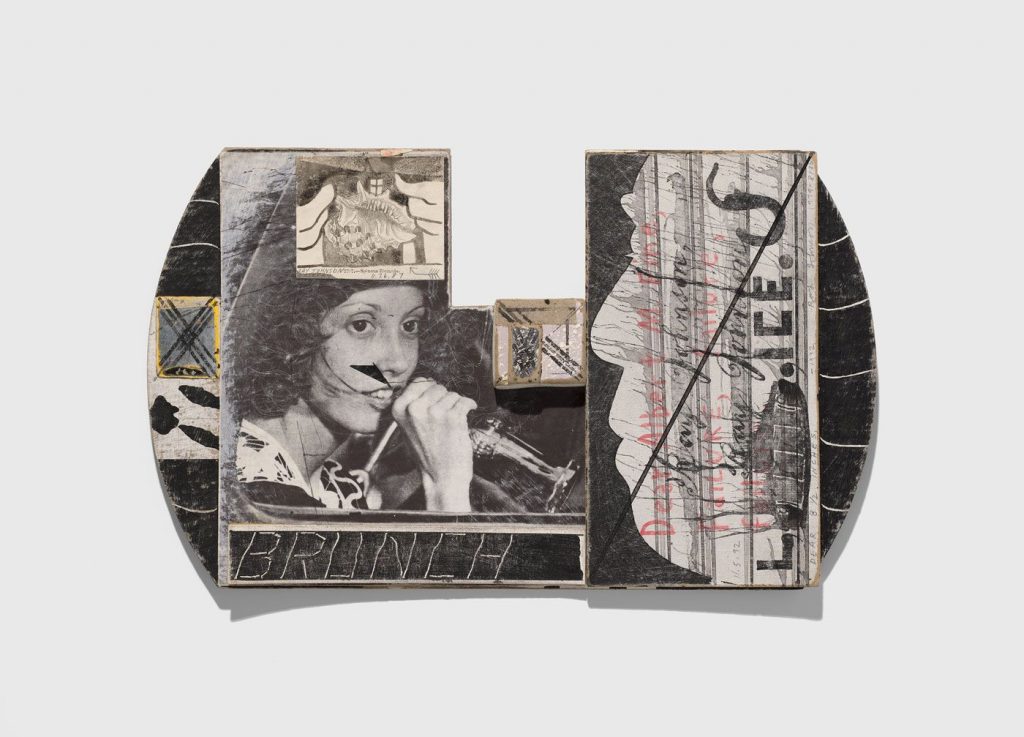
Ray Johnson mentions both Arakawa and Madeline in interviews, linking himself to Arakawa in terms of their exclusion from the literature on artist groups with which they were associated if not affiliated. He speaks of Madeline’s book, Word Rain, and says he is still waiting for her translation of Mallarmé’s swan poem, which she was supposed to mail to him. Hopefully she did at some point. Her translations are lovely.
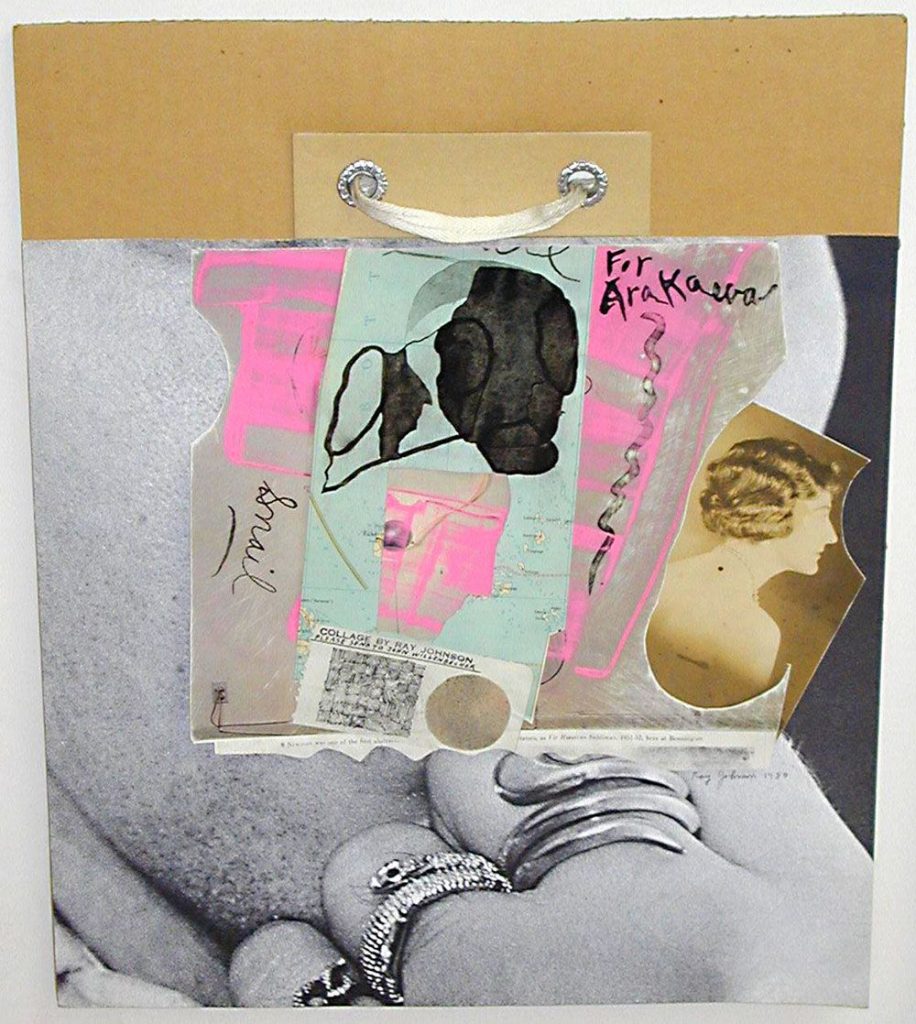
Arakawa’s signature can be found on Ray Johnson’s petition to have Geoff Hendricks shave his beard. We have a letter from Hendricks to Arakawa going over the details of a talk Arakawa was to give at Rutgers, so they certainly knew each other. Through Johnson’s correspondence art and his collages, a world of friendship and connections emerges in which Arakawa and Madeline were clearly enmeshed.
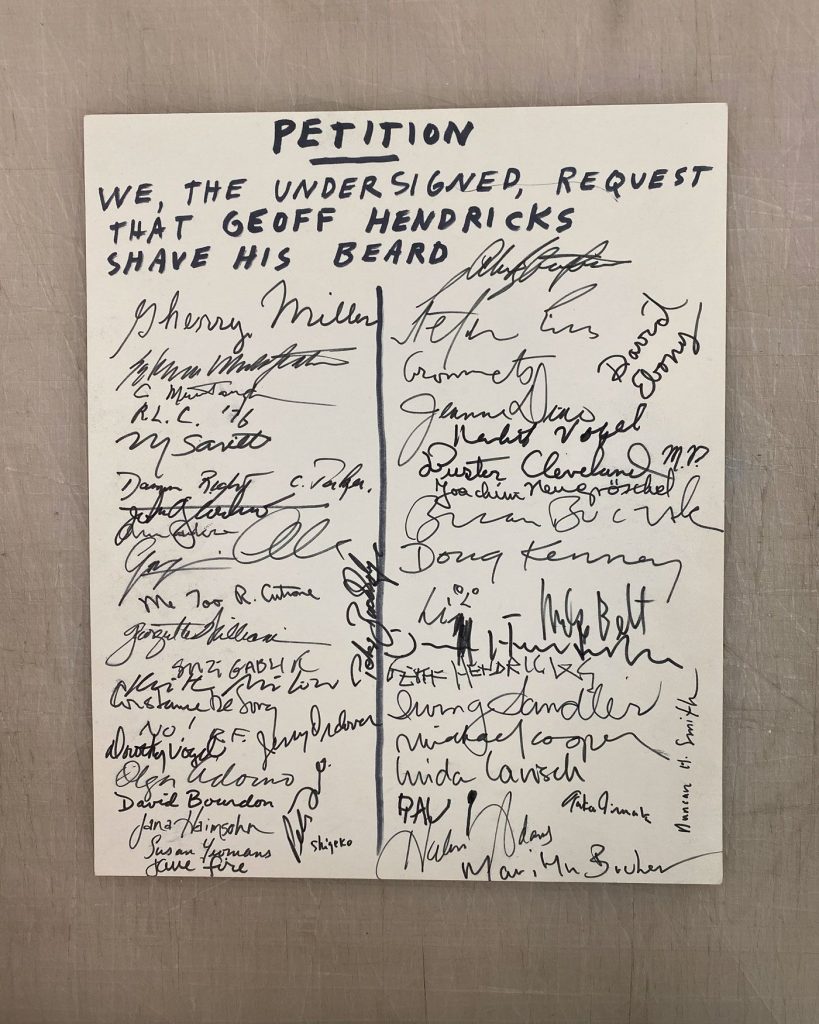
Another interesting item in our archive that allows us to see the interconnectivity of the New York art world is John Held’s Diary of Correspondence for 1979. In it, he lists letters to and from Ray Johnson, among a vast array of others, and also includes the date he saw Arakawa’s show at Feldman and had tea with Madeline.
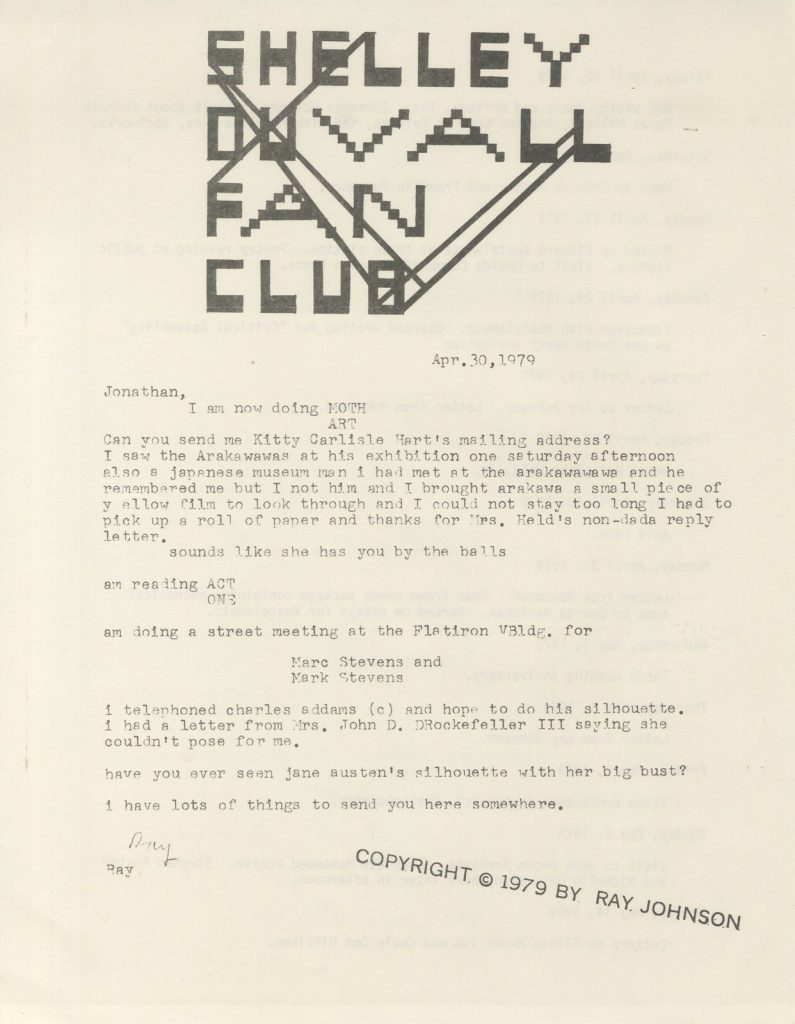
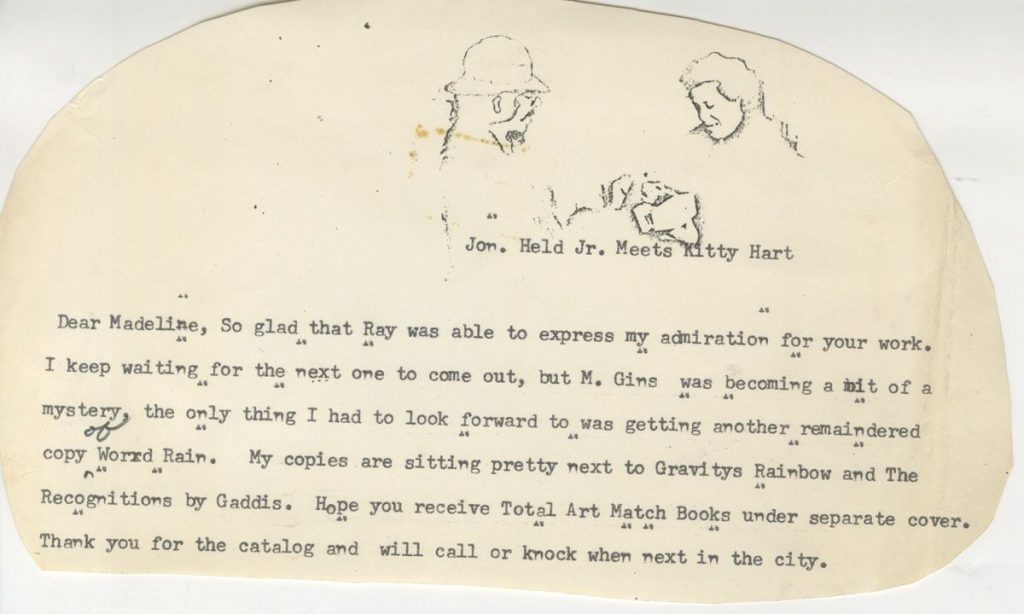
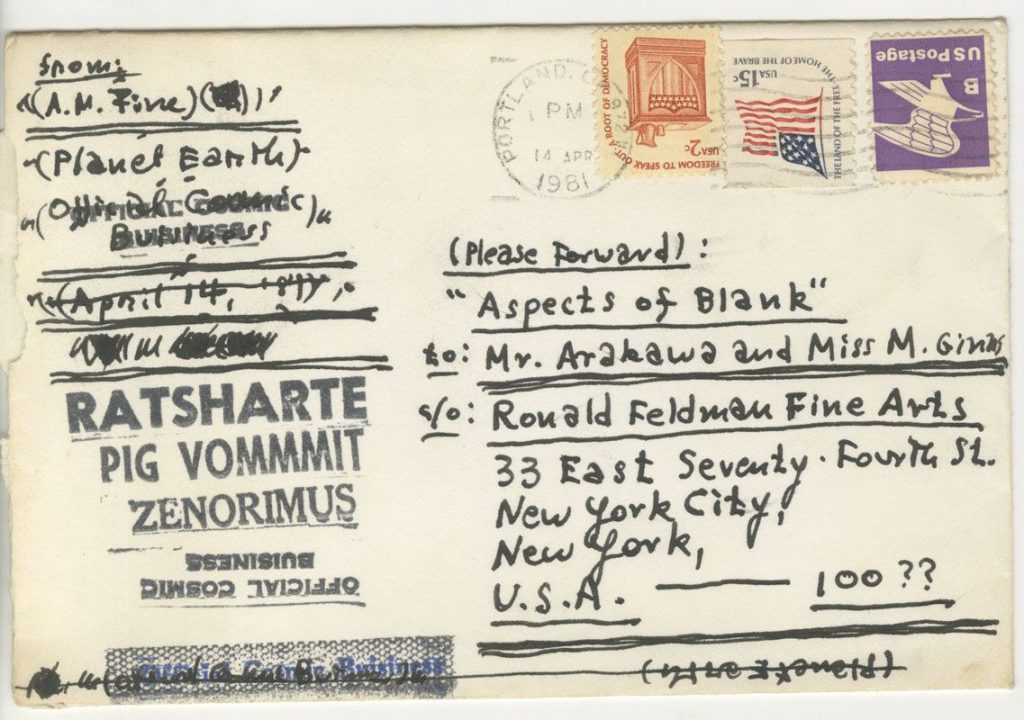
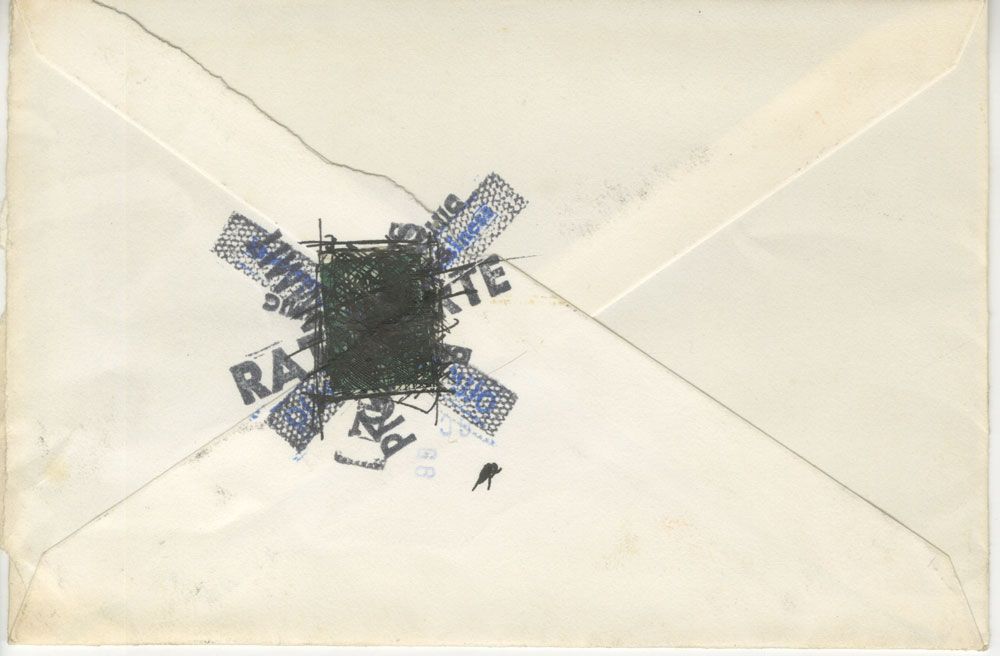
We hope you found this look into a long-ago friendship as fascinating as we did.
Yours in the reversible destiny mode,
Reversible Destiny Foundation and ARAKAWA+GINS Tokyo Office
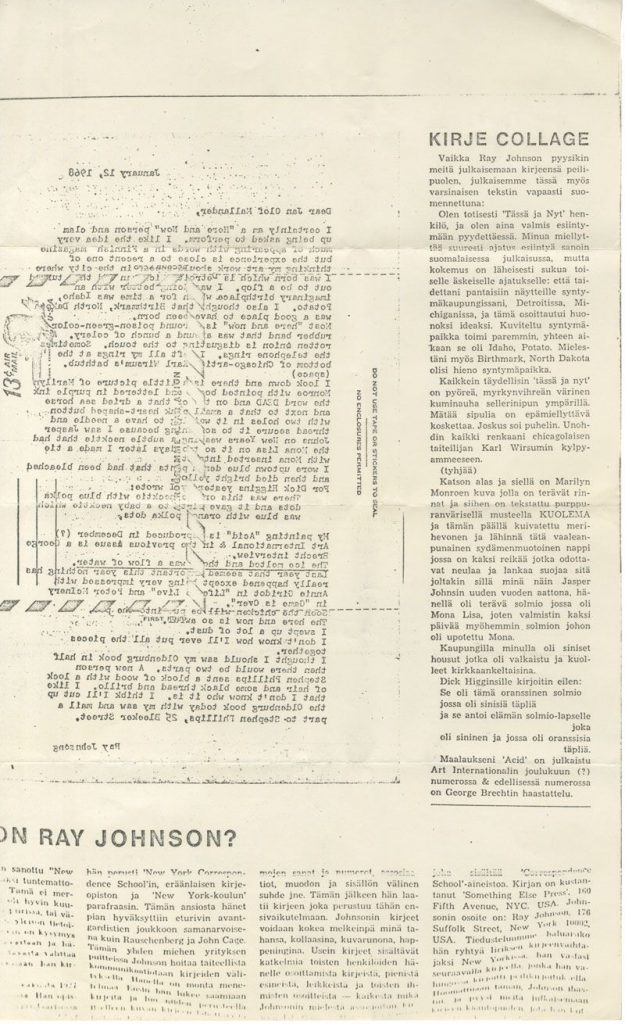
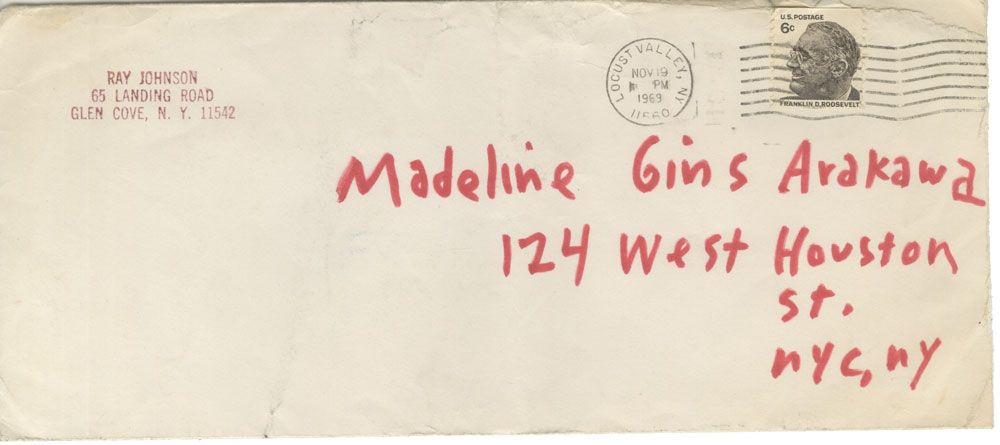
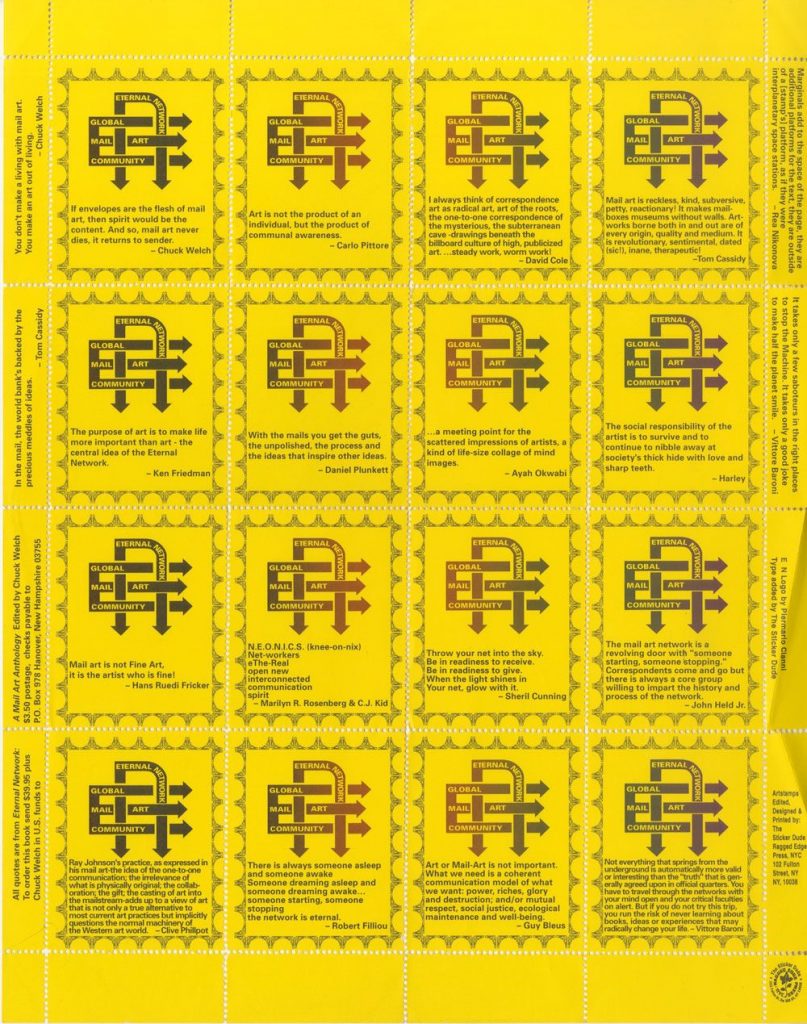
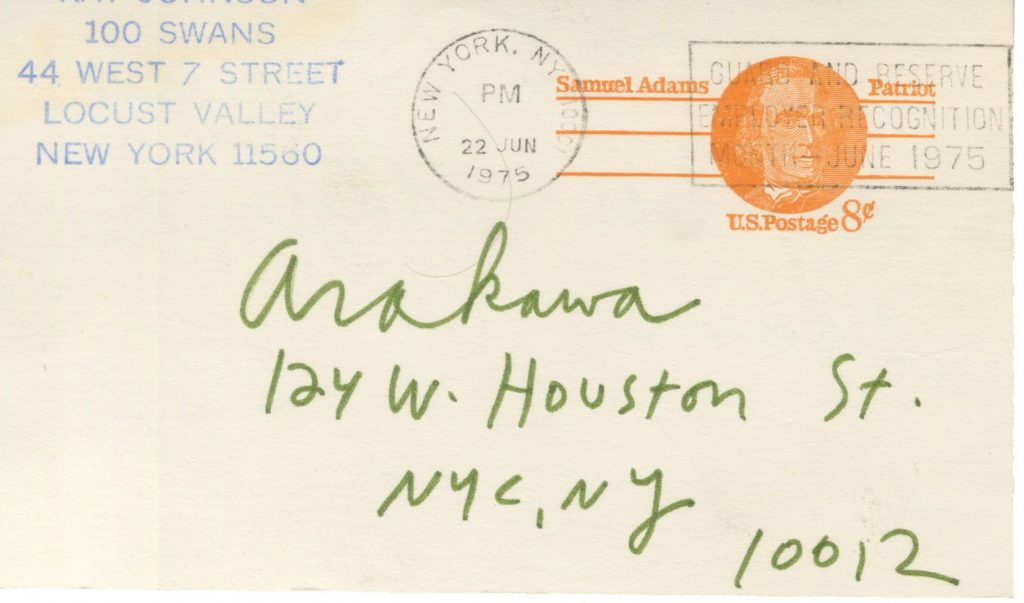
Special thanks to the Ray Johnson Estate
